People
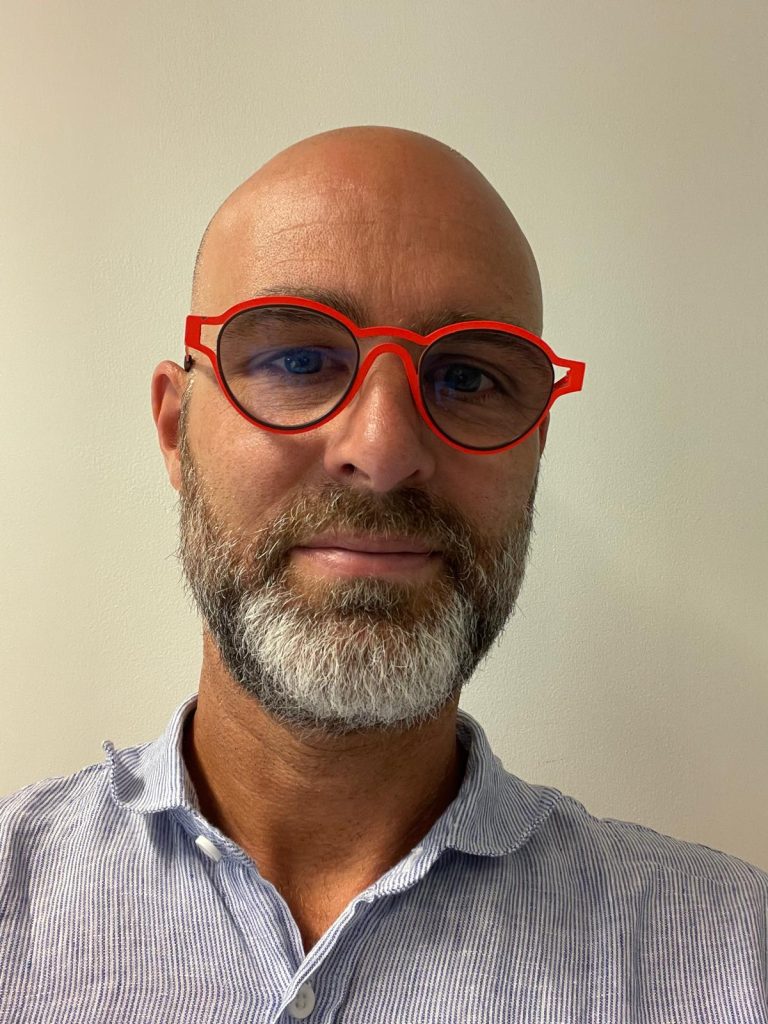
Dolf Weijers was trained as a biochemist (undergraduate) and developmental geneticist (PhD, Leiden), studying regulation of plant embryo development. He then moved to Tübingen to study auxin response components. He started his current team at Wageningen University in 2006, and their focus has since been on understanding the molecular mechanisms underlying multicellular plant development, often using the plant embryo as a model. His diverse and international team integrates biochemical, proteomic, cell biological, genetic and evolutionary approaches across several model systems to understand the fundamental principles guiding cell polarity, cell division and cellular signaling. In GreenTE, Dolf’s team will focus on mechanics as a developmental signal, and on the biochemical mechanisms underlying mechanosensing.
Show More
Weijers is actively engaged in promoting scientific excellence, science organization and outreach. He is theme chair for Developmental Biology at the graduate school Experimental Plant Sciences, has chaired Dutch plant science conferences, chaired the programme committee of the NWO Life congress, often acts on scientific committees of conferences (including the 10th Plant Biomechanics Conference; Lyon 2022), is member of the NWO round table Life Sciences and regularly acts as panel member for grant evaluations (ERC, NWO, DFG). He is secretary general of the International Association for Sexual Plant Reproduction Research and board member of the International Plant Growth Substances Association and the Dutch Society for Developmental Biology. He was member of the Young Academy at the Royal Netherlands Academy of Sciences (KNAW; 2010-2015), was elected member of KNAW (2021) and EMBO (2020) and founded the Wageningen Young Academy and Science Café Wageningen.
Key publications:
1. ‘DIX domain polymerization drives assembly of plant cell polarity complexes’, M. van Dop, M. Fiedler, S. Mutte, J. de Keijzer, K. Olijslager, C. Albrecht, C.Y. Liao, M.E. Janson, M. Bienz & D. Weijers, Cell 180, p. 427-439 (2020). https://www.sciencedirect.com/science/article/pii/S0092867420300581
2. ‘Origin and evolution of the nuclear auxin response system’, S. Mutte, H. Kato, C. Rothfels, M. Melkonian, G.K. Wong & D. Weijers, eLife 7, e33399 (2021). https://elifesciences.org/articles/33399
3. ‘Integration of growth and patterning during vascular tissue formation in Arabidopsis’, B. de Rybel, M. Adibi, A.S. Breda, J.W. Wendrich, M.E. Smit, O. Novak, N. Yamaguchi, S. Yoshida, G. van Isterdael, J. Palovaara, B. Njisse, M.V. Boekschoten, G. Hooiveld, T. Beeckman, D. Wagner, K. Ljung, C. Fleck & D. Weijers, Science 345, 1255215 (2014).
4. ‘Structural basis for DNA-binding specificity by the auxin-dependent ARF transcription factors’, R.D. Boer, A. Freire-Rios, W. van den Berg, T. Saaki, I. Manfield, S. Kepinski, I. Lopez-Vidrieo, J.M. Franco, S.C. de Vries, R. Solana, D. Weijers* & M. Coll*, Cell 156, p.577-589 (2014). https://linkinghub.elsevier.com/retrieve/pii/S0092-8674(13)01596-1 (*equally contributing corresponding authors).
5. ‘Monopteros controls embryonic root formation by regulating a mobile transcription factor’, A.S. Schlereth, B. Moller, W. Liu, J. Flipse, M. Kientz, E.H. Rademacher, M. Schmid, G. Juergens & D. Weijers, Nature 464, p.913-916 (2010). https://www.nature.com/articles/nature08836
Show Less
Sprakel heads the Green Mechanobiology group at WUR, an interdisciplinary team at the intersection of chemistry, physics and biology. He takes a biophysical approach to understand how plant and pathogens perceive, generate and adapt to mechanical stress. An important aspect is that his group develops new chemical, physical and engineering tools to visualize mechanical patterns in living cells and tissues, to mechanically manipulate walled cells and to understand how mechanical forces couple to biochemical and genetic processes invivo.
Show More
Sprakel has developed a toolbox of micromechanical imaging approaches, most notably a suite of fluorescent mechanosensitive probes with which his team created the first complete invivo micromechanical maps of living and growing plant tissues at subcellular resolution; these probes are now used by many laboratories across the globe and form the basis for a large number of international collaborations. His team also made groundbreaking discoveries in the mechanobiology of plant pathogenesis, discovering new mechano-biological feedback mechanisms employed by pathogens to penetrate and infect their hosts and translating this knowledge into the development of novel proof-of-concept strategies for pathogen control. Sprakel has received several awards and fellowships for his scientific and educational work, including VENI (2011) and VIDI (2016) grants from NWO, an ERC Consolidator Grant of the European Union (2020), the Houwink Polymer Award of the Royal Dutch Chemistry Society (2008-2010), the Thesis Award of the Dutch Polymer institute (2011) and the Excellent Education Prize of Wageningen University in 2014 and 2017. He served as a board member of the international SoftComp network-of-excellence, as member of the management team of the High-Tech Materials Institute of the 4TU federation and member of the Physics Board of the Lorentz Centre and is currently board member in the VLAG graduate school to ensure the quality, accessibility, and diversity of PhD training in the molecular life sciences. As an openly gay scientist, Sprakel is an advocate for diversity and LGBT+ inclusivity in the academic community.
Key publications:
1. ‘An actin mechanostat ensures hyphal tip sharpness in Phytophthora infestans to achieve host penetration’, J. Bronkhorst, K. Kots, D. de Jong, M. Kasteel, T. van Boxmeer, T. Joemmanbaks, F. Govers, T. Ketelaar & J. Sprakel, Science Advances 8(23), p.1-14 (2022). www.science.org/doi/epdf/10.1126/sciadv.abo0875
2. ‘A slicing mechanism facilitates host entry by plant-pathogenic Phytophthora’, J. Bronkhorst, M. Kasteel, S. van Veen, J.M. Clough, K. Kots, J. Buijs, J. van der Gucht, T. Ketelaar, F. Govers & J. Sprakel, Nature Microbiology 6(8), p.1000-1006 (2021). https://edepot.wur.nl/550454
3. ‘Plant cell polarity as the nexus of tissue mechanics and morphogenesis’, V. Gorelova, J. Sprakel & D. Weijers, Nature Plants 7, p.1548-1559 (2021).
4. ‘Light from within: sensing weak strains and femtoNewton forces in single molecules’, T. van de Laar, H. Schuurman, P van der Scheer, J.M. van Doorn, J. van der Gucht & J. Sprakel, Chem 4(2), p.269-284 (2018). https://doi.org/10.1016/j.chempr.2017.12.016
5. ‘Complete microviscosity maps of living plant cells and tissues with a toolbox of targeting mechanoprobes’, L. Michels, V. Gorelova, Y. Harnvanichvech, J.W. Borst, B. Albada, D. Weijers & J. Sprakel, Proc. Natl. Acad. Sci. U S A 117(30), p.18110-18118 (2020). https://doi.org/10.1073/pnas.1921374117
Show Less
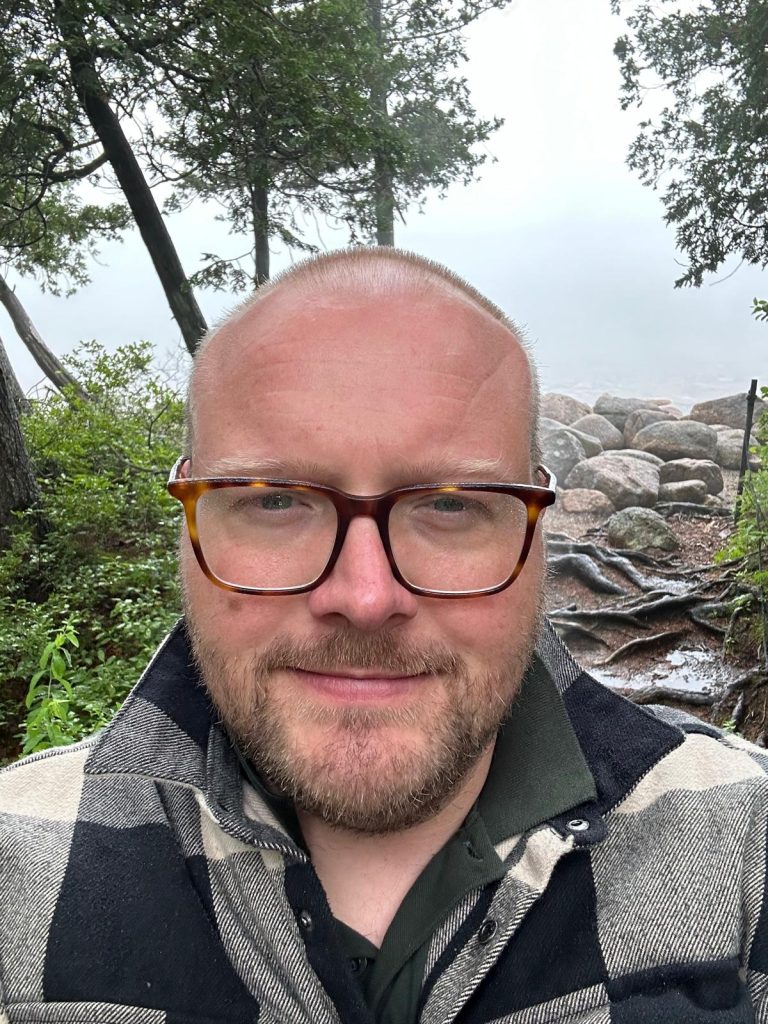
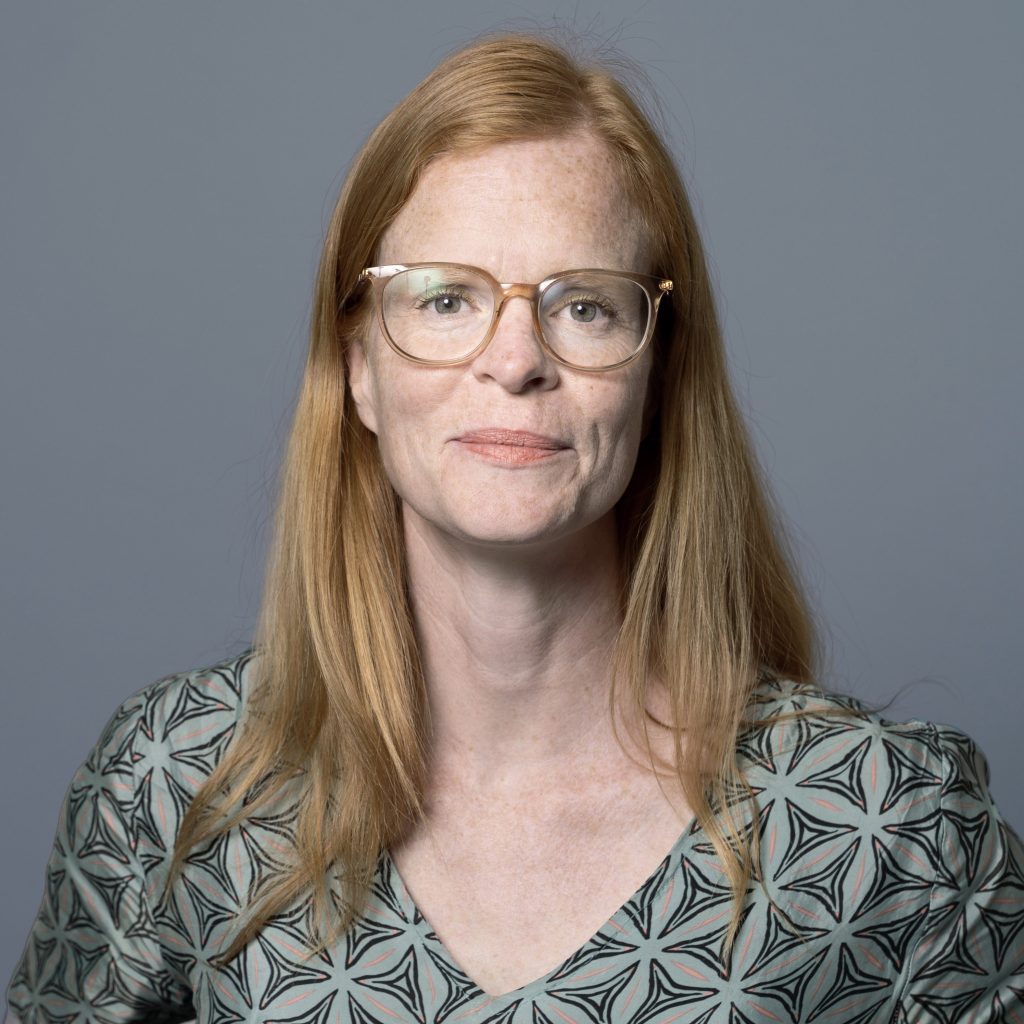
Marleen Kamperman heads the Polymer Science group within the Zernike Institute for Advanced Materials at the University of Groningen. Her group is positioned at the interface of chemistry, biology and physics and is interested in the biologically inspired synthesis of polymeric materials with controlled adhesive and mechanical properties. Her team uses different polymerization techniques and processing tools to develop novel polymer systems for adhesives, fibers, scaffolds and coatings.
Show More
Her current research focuses on understanding and mimicking material processing of natural systems to advance sustainable polymeric material design. She is fascinated by the emerging understanding that liquid coacervate phases are crucial in the processing of many different biological material systems. Her group pioneered the design of complex coacervate-based adhesives that solidify upon specific environmental triggers. Kamperman received several (inter)national fellowships, prestigious awards and personal grants, including the KNCV Van Marum Medal from the Royal Netherlands Chemical Society (2018), VENI/VIDI and Athena grants from NWO (2010/2014), and an ERC Consolidator Grant of the European Union (2019) for her work in the areas of polymer science and physical chemistry. She is scientific director of the Health Technology Research & Innovation Cluster (HTRIC) of the University Medical Centre Groningen and University of Groningen and a board member of the Zernike Institute for Advanced Materials. On a national level she was elected to the Young Academy of the Royal Netherlands Academy of Arts and Sciences (DJA-KNAW) in 2015. She is chair of the NWO Advisory Committee “Physics of Fluids and Soft Matter”, and a member of the Dutch Chemistry Council and of the Dutch Network of Women Professors (LNVH). Internationally, she is an Executive Committee Member of the Adhesion Society and a member of the Scientific Advisory Board of DWI Leibniz Institute for Interactive Materials.
Key publications:
1. ‘Underwater Adhesion of Multiresponsive Complex Coacervates’, M. Dompe, F.J. Cedano-Serrano, M. Vahdati, L. van Westerveld, D. Hourdet, C. Creton, J. van den Gucht, T. Kodger, M. Kamperman*, Advanced Materials Interfaces 7, 1901785 (2020). https://onlinelibrary.wiley.com/doi/10.1002/admi.201901785
2. ‘Thermoresponsive complex coacervate-based underwater adhesive’, M. Dompe, F.J. Cedano-Serrano, O. Heckert, N. van den Heuvel, J. van den Gucht, Y. Tran, D. Hourdet, C. Creton, M. Kamperman*, Advanced Materials 1808179 (2019). https://onlinelibrary.wiley.com/doi/full/10.1002/adma.201808179
3. ‘Adhesion composition’, M. Kamperman, M. Dompe, A.D. Filippov, Patent No. WO2019172764, 8-Mar-2019.
https://patents.google.com/patent/US20210008244A1
4. ‘Bioinspired Underwater Adhesives by Using the Supramolecular Toolbox’, A.H. Hofman, I.A. van Hees, J. Yang, M. Kamperman*, Advanced Materials 30, 1704640 (2018). https://onlinelibrary.wiley.com/doi/full/10.1002/adma.201704640
5. ‘Jack of all trades: versatile catechol crosslinking mechanisms’, J. Yang, M.A. Cohen Stuart, M. Kamperman*, Chemical Society Reviews 43, p.8271-8298 (2014).
https://pubs.rsc.org/en/content/articlelanding/2014/cs/c4cs00185k/unauth
Show Less
Leónie Bentsink heads the Wageningen Seed Science Centre at WUR. The key research question addressed in the team of Bentsink is how seed germination is regulated. In answering this question important seed traits like seed dormancy and seed longevity (shelf-life) are taken along. A current focus of the Bentsink group is on the role of RNA translation during seed germination. A process of interest since seeds contain large amounts of stored mRNAs, which need to be translated into proteins to allow the seed to germinate. Seeds are intriguing but complex structures, and as such not always accessible to advanced molecular techniques. Nevertheless, the team of Bentsink has been able to build the fundament for what will be instrumental for the mechanistic unravelling of germination related traits.
Show More
A recent output of this is the identification of the mRNA interactome of germinating seeds, which provides insights in the proteins that regulate seed germination. Bentsink has received several personal grants including the NWO VENI (2005), VIDI (2013), VICI (2019) and Aspasia (2014, 2020) grants as well as grants that are part of the Applied and Engineering domain of NWO. Several of these grants are supported by the Dutch seed industry. Bentsink is coordinator of research theme 3 “Metabolism and Adaptation” of the national graduate school for Experimental Plant Sciences (EPS) and member of the program committee of NWOlife. Furthermore, Bentsink is steering the Seed for the Future initiative, this initiative aims at stimulating the seed science and technology sectors and to maintain and improve the infrastructure for research and education in this sector. Bentsink organised the 6th International Workshop on Molecular Aspects of Seed Dormancy and Germination in 2019. Moreover, Bentsink has long standing collaborations with amongst others, J. Hanson (Umeå, Sweden), C. Alonso-Blanco (Madrid, Spain) and R. Merret and C. Bousquet-Antonelli (Perpignan, France).
Key publications:
1. ‘The mRNA-binding proteome of a critical phase transition during Arabidopsis seed germination.’ N. Sajeev, A. Baral, A.H.P. America, L.A.J. Willems, R. Merret and L. Bentsink. New Phytologist 233, p.251-264 (2022). https://nph.onlinelibrary.wiley.com/doi/10.1111/nph.17800
2. ‘Seed-Stored mRNAs that Are Specifically Associated to Monosomes Are Translationally Regulated during Germination’. B. Bai, S. van der Horst, J.H.G. Cordewener, T. America, J. Hanson and L. Bentsink. Plant Physiology 182(1), p.378-392 (2020). https://academic.oup.com/plphys/article/163/1/205/6110804
3. ‘Seeds: A Unique System to Study Translational Regulation.’ N. Sajeev, B. Bai and L. Bentsink. Trends Plant Science 24(6). p.487-495 (2019). https://doi.org/10.1016/j.tplants.2019.03.011
4. ‘Extensive translational regulation during seed germination revealed by polysomal profiling.’ B. Bai, A. Peviani, S. van der Horst, M. Gamm, B. Snel, L Bentsink*, J. Hanson*. New Phytologist 214, p.233-244 (2017).
https://nph.onlinelibrary.wiley.com/doi/10.1111/nph.14355
5. ‘Transcriptional dynamics of two seed compartments with opposing roles in Arabidopsis seed germination.’ B.J. Dekkers, S. Pearce, R.P. van Bolderen-Veldkamp, A. Marshall, P. Widera, J. Gilbert, H.G. Drost, G.W. Bassel, K. Muller, J.R. King, A.T. Wood, I. Grosse, M. Quint, N. Krasnogor, G. Leubner-Metzger, M.J. Holdsworth, L. Bentsink. Plant Physiology 163, p.205-215 (2013). https://academic.oup.com/plphys/article/163/1/205/6110804
Show Less
https://www.wur.nl/en/research-results/projects-and-programmes/wageningen-seed-science-centre-1.htm
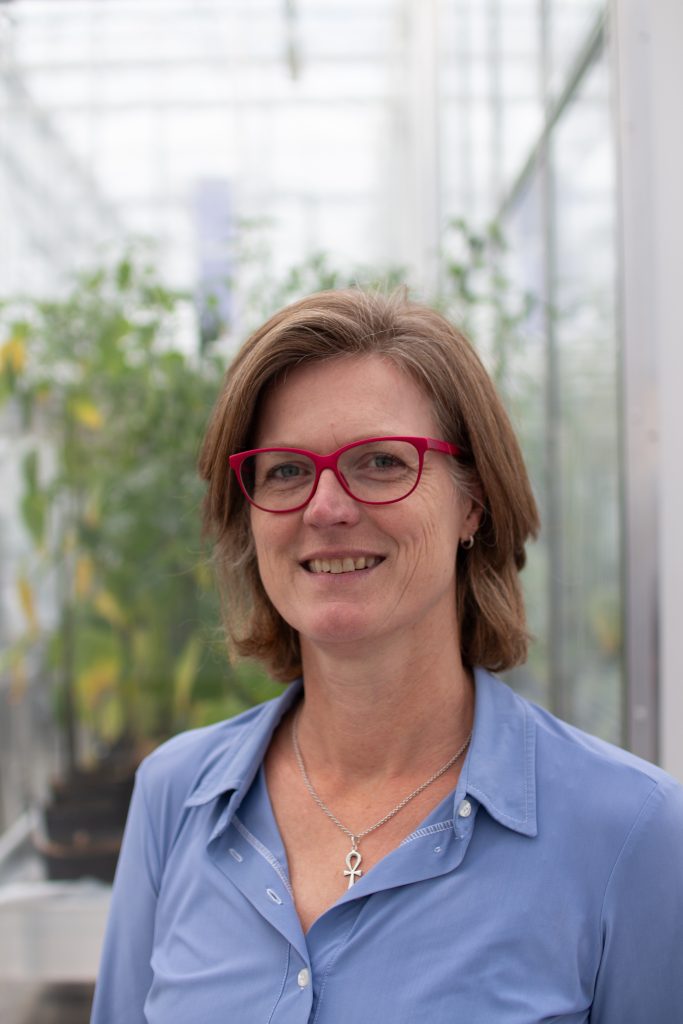
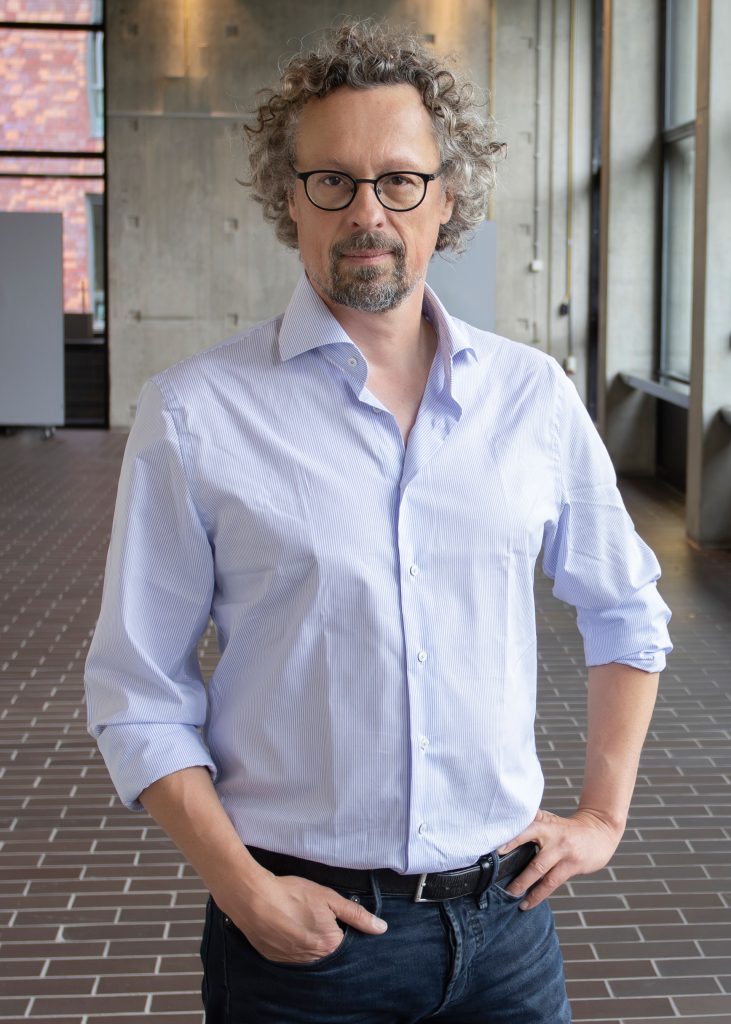
Gijs Wuite currently heads the physics of Living Systems section at the Vrije Universiteit Amsterdam. The aim of his group is to bring physics into biology to quantitatively describe biological phenomena. He is a pioneer of the combination of optical tweezers with fluorescence microscopy. Notable is his publication in 2013 (Nature Methods) on STED with optical tweezers in collaboration with Prof. Hell (Nobel laureate) and his 2016 Nature paper describing the integration of a multi-beam optical trap capable of handling multiple DNA molecules with fluorescence microscopy.
Show More
Another key innovation is the invention of a new class of biophysical instrumentation, Acoustic Force Spectroscopy, which is making a big impact with research groups across the world implementing this technology. With these techniques he has worked extensively on DNA-transactions, virology and biomechanics. Based on this research he founded LUMICKS (250+ employees & >15 M€ revenue in 2021) that brings his technology to the market. Wuite has received many awards and fellowships for his scientific work, including a NWO-VICI (2008) grant, an ERC Consolidator (2010) and ERC Advanced (2020) Grant of the European Union. The Amsterdam Impact Award (2019) for the most innovative scientific idea in Amsterdam. He was chosen as the IUBMB Jubilee Lecturer (2019). He obtained the NWO Physics Valorisation Prize (2017). He was one of the “2013 Young Scientist”, an honour bestowed by the World Economic Forum to recognize the most distinguished science leaders under 40. Wuite was an elected member (2009) of the Young Academy (DJA), part of the Royal Dutch Academy of Sciences (KNAW). He is an elected member (2014) of the Global Young Academy. He severed on the management boards of both Academies. He has demonstrated his skills by leading many multi-partner/multi-million research programs, among others, a FOM-program (13 partners), the ‘Bio-nanosensing’ program of the Top Sector HTS&M (9 partners) and a FETopen program (5 partners).
Key publications:
1. ‘Nonlinear mechanics of human mitotic chromosomes’, A.E.C. Meijering, C.F. Nielsen, H. Witt, J. Harju, E. Kerklingh, G.H Haasnoot, A.H Bizard, I. Heller, C.P Broedersz, Y. Liu, E.J.G. Peterman, I.D. Hickson, G.J.L. Wuite. Nature 605 (7910), 545-550 (2022). https://www.nature.com/articles/s41586-022-04666-5
2. ‘Revealing in real-time a multistep assembly mechanism for SV40 virus-like particles’. M.G.M. van Rosmalen, D. Kamsma, A.S. Biebricher, C. Li, A. Zlotnick, W.H. Roos, G.J.L. Wuite. Science Advances 6(16), eaaz1639 (2020). https://www.science.org/doi/10.1126/sciadv.aaz1639 (O)
3. ‘Supercoiling DNA optically’. G.A. King, F. Burla, E.J.G. Peterman, G.J.L. Wuite. Proceedings of the National Academy of Sciences 116 (52) 26534-26539 (2019). https://www.pnas.org/doi/10.1073/pnas.1908826116
4. ‘Sliding sleeves of XRCC4-XLF bridge DNA and connect fragments of broken DNA’. I. Brouwer, G. Sitters, A. Candelli, S.J. Heerema, I. Heller, A.J. de Melo, H. Zhang, D. Normanno, M. Modesti, E.J.G. Peterman, G.J.L. Wuite. Nature 535(7613), 566 (2016). https://www.nature.com/articles/nature18643
5. ‘Acoustic force spectroscopy’. G. Sitters, D. Kamsma, G. Thalhammer, M. Ritsch-Marte, E.J.G. Peterman, G.J.L. Wuite, Nature Methods 12:1 (2015). https://www.nature.com/articles/nmeth.3183
Show Less
Kim Boutilier heads the Plant Regeneration group at Wageningen University, which studies the molecular and cellular basis for plant cell totipotency. Her group uses diverse in planta and in vitro embryogenesis systems, including embryogenesis from haploid cells (microspore embryogenesis, parthenogenesis) and vegetative tissues (somatic embryogenesis), to understand how differentiated plants cells are induced to switch fates and develop into embryos in the absence of fertilization. Her research focusses on the role of chromatin-level and transcriptional changes, as well as the role of plant hormones and stress in totipotency induction.
Show More
Her group’s research resulted in major breakthroughs in the plant regeneration field, in particular the role of histone acetylation and the BABY BOOM transcription factor in the establishment of plant embryo identity. These breakthroughs have been translated into practical applications that are widely applied to improve in vitro and in planta plant regeneration. She has more than 10 patent applications in the field of in vitro embryogenesis, several of which are broadly licensed to international plant breeding companies. Kim Boutilier has a large international network of collaborators, with whom she regularly publishes. She is part of an international ‘Apomixis Consortium’ comprising a group of top international scientists who aim to understand and engineer clonal seed development in plants. She is scientific advisor for two Belgian project consortia on microspore embryogenesis, where she provides scientific feedback and training. She will participate as Panel Member in the evaluation of ERC Consolidator Grants proposals in 2023. Although not directly affiliated with a university, she is actively involved in training young scientists by graduating PhD students and supervising post-docs, and through yearly lectures on plant embryogenesis technologies in the ‘Green Biotechnology’ and ‘Plant and Animal Development’ courses at Leiden University, and the ‘Master Class on Seed Technology’ course at Wageningen University.
Key publications:
1. ‘Live Imaging of embryogenic structures in Brassica napus microspore embryo cultures highlights the developmental plasticity of induced totipotent cells’, P. Corral Martinez, C. Siemons, A. Horstman, G. C. Angenent, N. de Ruijter and K. Boutilier, Plant Reproduction 33(3-4), p.143–158 (2020). https://doi:10.1007/s00497-020-00391-z
2. ‘Cell wall composition and structure define the developmental fate of embryogenic microspores in Brassica napus’. C. Camacho Fernandez, J. M. Segui-Simarro, R. Mir, K. Boutilier, P. Corral-Martinez, Frontiers in Plant Science 12, 737139 (2021). https://doi.org/10.3389/fpls.2021.737139
3. ‘In vivo maternal haploid induction in tomato’, Y. Zhong, B. Chen, D. Wang, X. Zhu, M. Li, J. Zhang, M. Chen, M. Wang, T. Riksen, J. Liu, X. Qi, Y. Wang, D. Cheng, Z. Liu, J. Li, C. Chen, Y. Jiao, W. Liu, S. Huang, C. Liu*, K. Boutilier*, S. Chen*, Plant Biotechnology Journal 20(2), p.250–252 (2021). https://doi: 10.1111/pbi.13755. *co-corresponding authors.
4. ‘BABY BOOM regulates early embryo and endosperm development’, B. Chen, L. Maas, D. Figueiredo, Y. Zhong, R. Reis, M. Li, A. Horstman, T. Riksen, M. Weemen, H. Liu, C. Siemons, S. Chen, G. C. Angenent and K. Boutilier, Proceedings of the National Academy of Science 119(25), e2201761119 (2022). https://doi.org/10.1073/pnas.2201761119
5. ‘Auxin biosynthesis maintains embryo identity and growth during BABY BOOM-induced somatic embryogenesis’, M. Li, J. Wrobel-Marek, I. Heidmann, A. Horstman, B. Chen, R. Reis, G. C. Angenent and K. Boutilier, Plant Physiology 188(2), p1095–1110 (2022). https://doi.org/10.1093/plphys/kiab558
Show Less
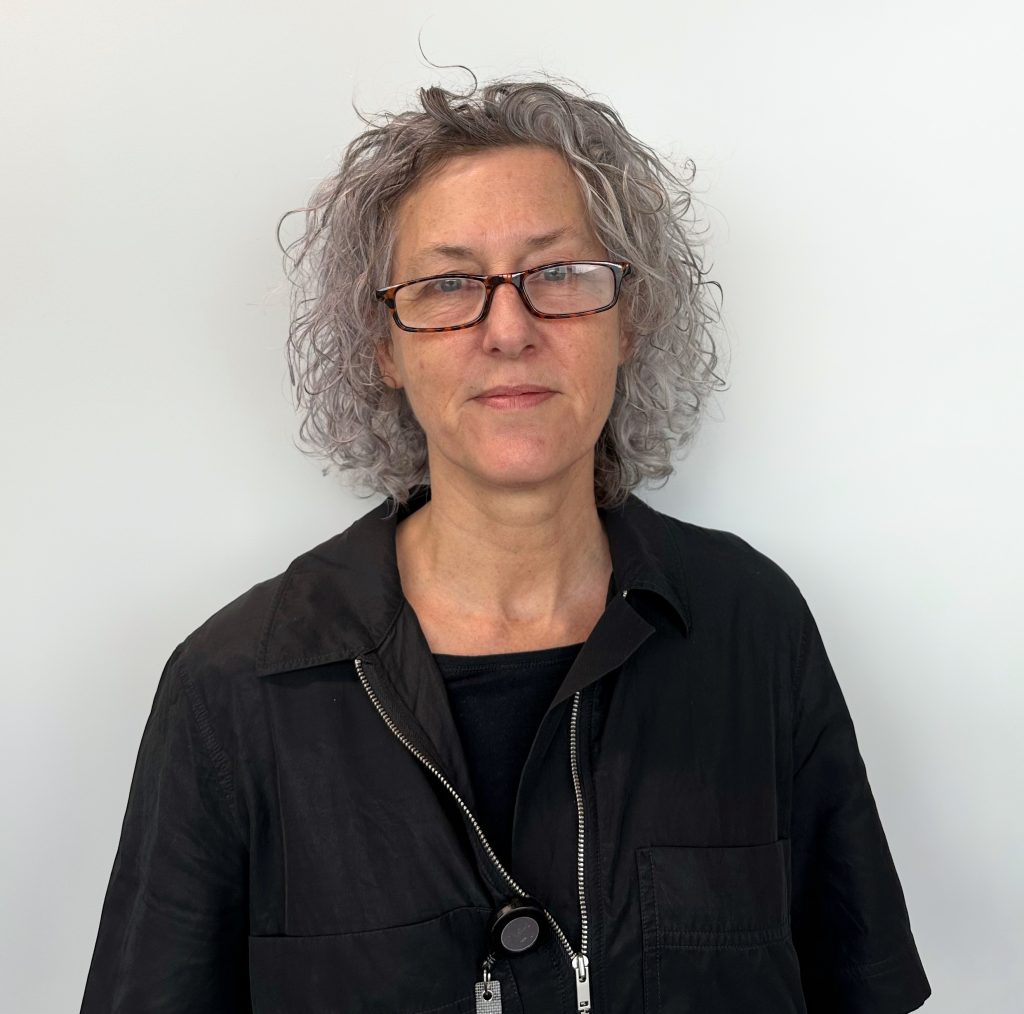
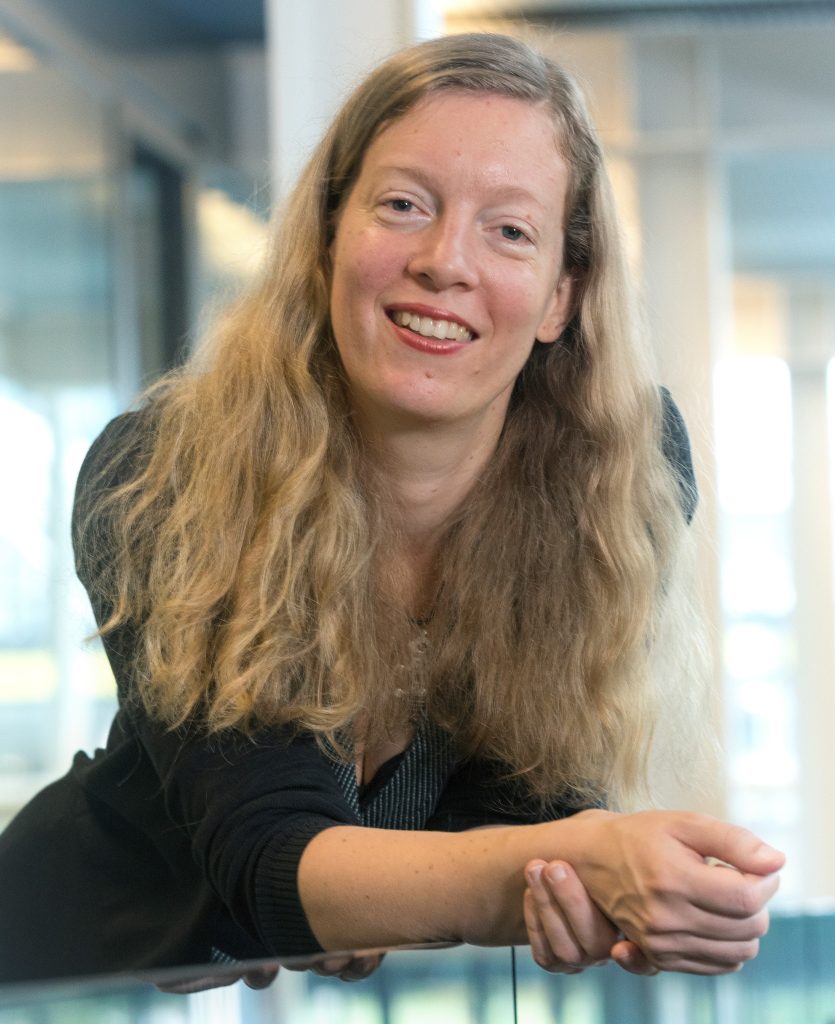
Prof. Dr. Ir. Ilja Voets heads the Laboratory of Self-organizing Soft Matter at Eindhoven University of Technology (TU/e). Ilja Voets and her team study self-assembly processes in biological and soft matter. We seek to understand the simple rules that orchestrate how complex functionalities emerge from hierarchical self-organisation aiming to translate these into rational design strategies to create innovative and lifelike materials for health, foods, photonics, biotechnology, and energy applications.
Show More
Our research currently concentrates on elucidating structure-function relations of soft matter, ranging from polyelectrolyte-templated reaction-assembly networks, DNA-coated colloids, and (artificial) enzymes to ice-interactive materials, complex food matrices, and plant cell walls. Our pioneering work in soft matter nanoscopy led to a series of major breakthroughs including the new tool iPAINT, the first visualization of supramolecular block copolymers, and the first simultaneous and in-situ visualization of individual nanoparticles and the liquid-liquid interface to which these are adsorbed. Recently, we started to visualize the ultrastructure of complex food matrices aiming ultimately to (re)create the foods of the future that are sustainable, safe, nutritionally dense, and affordable. Within GreenTE, we will use super-resolution microscopy to peer deeper into plant cell wall structure and composition during development, growth, regeneration, and pathogen infection.
Key publications:
1. ‘Nanoscopy of single antifreeze proteins reveals that reversible ice-binding is sufficient for ice-recrystallization inhibition but not thermal hysteresis’, R.P. Tas, M.M.R.M. Hendrix, I.K. Voets, Proceedings of the National Academy of Science just accepted (2022).
2. ‘Spatial Distribution of αs1-Caseins and β-Caseins in Milk Gels acidified with Glucono-δ-lactone’, S. Foroutanparsa, M. Bruls, C.E.P. Maljaars, R.P. Tas, I.K. Voets, Food Hydrocolloids just accepted (2022).
3. ‘Small Peptide–Protein Interaction Pair for Genetically Encoded, Fixation Compatible Peptide-PAINT, R.P. Tas, L. Albertazzi, I.K. Voets, Nano Letters (21), 9509-9516 (2021). DOI: 10.1021/acs.nanolett.1c02895
4. ‘Illuminating the Impact of Submicron Particle Size and Surface Chemistry on Interfacial Position and Pickering Emulsion Type’, E.C. Giakoumatos, A. Aloi, I.K. Voets, Nano Letters 20 (7), p.4837–4841 (2020).
5. ‘Painting Supramolecular Polymers in Organic Solvents by Super-Resolution Microscopy’, B. Adelizzi, A. Aloi, N. Van Zee, A.R.A. Palmans, E.W. Meijer, I. K. Voets. ACS Nano. 12 (5): 4431–4439 (2018).
Show Less
Prof. Dr. Jian Xu received his Ph.D. in Molecular Genetics from Utrecht University, the Netherlands, in 2005. He continued his research as a postdoctoral fellow at Utrecht, supported by the Dutch NWO Talent Programme Veni. In 2009, he began his independent career at the National University of Singapore, first as an Assistant Professor and then as a tenured Associate Professor. Prof. Xu returned to the Netherlands in 2019 as the Chair Professor and Head of the Department of Plant Systems Physiology at Radboud University.
Show More
Currently, he leads an interdisciplinary group focused on single-cell biology research, discovery, and application. His research is driven by a deep fascination with the remarkable abilities of plant roots to generate diverse organ types post-embryonically and thrive in challenging soil environments. The extraordinary resilience of plant roots serves as a profound inspiration, guiding his primary goal to unveil the intricate molecular and cellular mechanisms orchestrating cell development and adaptation. Specifically, his focus delves into unravelling the nuances of cell heterogeneity, plasticity, and regulation, with a particular emphasis on the origin and evolution of cell types and their implications for tissue engineering and germplasm innovation. Over the past few years, he has been deeply captivated by the transformative potential of cutting-edge single-cell technologies, leveraging them to map gene expression in spatial contexts, especially tailored for plants. (visit https://rootcellatlas.org/)
Key publications:
1. ‘SETDB1 acts as a topological accessory to Cohesin via an H3K9me3-independent, genomic shunt for regulating cell fates’, Warrier T, El Farran C, Zeng Y, Ho BSQ, Bao Q, Zheng ZH, Bi X, Ng HH, Ong DST, Chu JJH, Sanyal A, Fullwood MJ, Collins JJ, Li H, Xu J, Loh YH. Nucleic Acids Research. 2022 Jul 22;50(13):7326-7349. https://doi.org/10.1093/nar/gkac531
2. ‘Single-Cell Transcriptome Analysis in Plants: Advances and Challenges’, Shaw R, Tian X, Xu J. Molecular Plant. 2021 Jan 4;14(1):115-126. O https://doi.org/10.1016/j.molp.2020.10.012 (Molecular Plant Best of 2021)
3. ‘Diversification of reprogramming trajectories revealed by parallel single-cell transcriptome and chromatin accessibility sequencing’, Xing QR, El Farran CA, Gautam P, Chuah YS, Warrier T, Toh CXD, Kang NY, Sugii S, Chang YT, Xu J, Collins JJ, Daley GQ, Li H, Zhang LF, Loh YH.. Science Advances. 2020 Sep 11;6(37): eaba1190.
https://doi.org/10.1126/sciadv.aba1190
4. ‘Parallel bimodal single cell sequencing of transcriptome and chromatin accessibility’, Xing QR, Farran CAE, Zeng YY, Yi Y, Warrier T, Gautam P, Collins JJ, Xu J, Droge P, Koh CG, Li H, Zhang LF, Loh YH. Genome Research. 2020 Jul;30(7):1027-1039. https://doi.org/10.1101%2Fgr.257840.119
5. ‘A Sacrifice-for-Survival Mechanism Protects Root Stem Cell Niche from Chilling Stress’, Hong JH, Savina M, Du J, Devendran A, Kannivadi Ramakanth K, Tian X, Sim WS, Mironova VV, Xu J. Cell. 2017 Jun 29;170(1):102-113.e14. https://doi.org/10.1016/j.cell.2017.06.002
Show Less
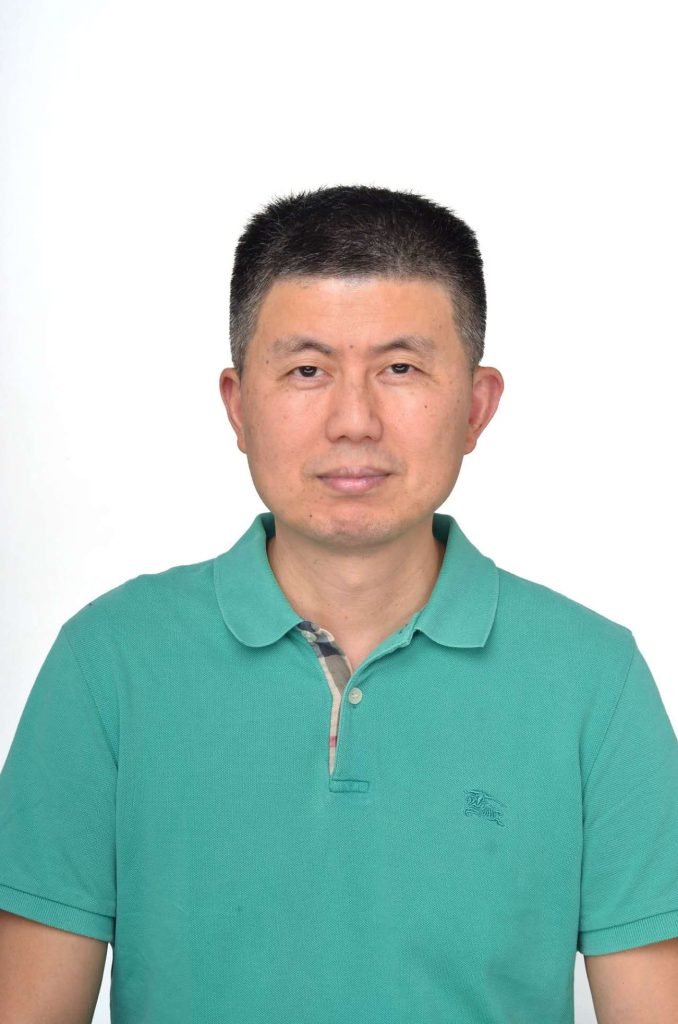

Jasper Van der Gucht chairs the Laboratory of Physical Chemistry and Soft Matter at WUR. He leads an interdisciplinary group that aims to understand the microscopic mechanisms that underlie mechanical properties and functioning of soft materials, in particular (bio)polymer and colloidal materials. For this he combines experimental characterization with theory and computer simulations. His group made significant contributions to the understanding of the role of electrostatic interactions in structuring polymer materials and in the development of functional materials based on ionic interactions. In the last decade, his work focused mostly on the non-linear mechanics and fracture of heterogeneous (bio)polymer networks and biological composite materials.
Show More
His group focuses on fundamental understanding, but also has many active collaborations with various companies. He received various recognitions for his work, including the KNCV Houwink Polymer prize (2004), the Dutch Polymer Institute Golden Thesis Award (2004), a long-term HFSP fellowship (2004), HFSP Career Development Award (2009), VIDI (2010) and ERC Consolidator Grants (2016). He is a member of the NWO Working Group Chemistry of Materials, a council member of the International Association of Colloid and Interface Scientists, and previously served as board member of the WUR graduate school VLAG and of the NWO working group soft matter. He is also coordinator of the postgraduate course RPK Polymer physics and the Winter School for Physical Chemistry and Soft Matter in Han sur Lesse (Belgium).
Key publications:
1. ‘Stress management in composite biopolymer networks’, F. Burla, J. Tauber, S. Dussi, J. van der Gucht, G.H. Koenderink, Nature Physics 15: 549 (2019). https://arxiv.org/ftp/arxiv/papers/1810/1810.03896.pdf
2. ‘Athermal Fracture of Elastic Networks: How Rigidity Challenges the Unavoidable Size-Induced Brittleness’, S. Dussi, J. Tauber, J. van der Gucht, Physical Review Letters 124: 018002 (2020). https://edepot.wur.nl/514057
3. ‘Connectivity and plasticity determine collagen network fracture’, F. Burla, S. Dussi, C. Martinez-Torres, J. Tauber, J. van der Gucht*, G.H. Koenderink*, PNAS 117: 8326 (2020). https://edepot.wur.nl/521189
4. ‘Propagation and attenuation of mechanical signals in ultrasoft 2D solids’, J.M. van Doorn, R. Higler, R. Wegh, R. Fokkink, A. Zaccone, J. Sprakel, J. van der Gucht, Science Advances 6: eaba6601 (2020). https://www.science.org/doi/10.1126/sciadv.aba6601
5. ‘An actin mechanostat ensures hyphal tip sharpness in Phytophthora infestans to achieve host penetration’, J. Bronkhorst, K. Kots, D. de Jong, M. Kasteel, T. van Boxmeer, T. Joemmanbaks, F. Govers, J. van der Gucht, T. Ketelaar, J. Sprakel, Science Advances 8(23), p. 1-14 (2022). https://www.science.org/doi/epdf/10.1126/sciadv.abo0875
Show Less
Guido Van den Ackerveken is professor of Translational Plant Biology at Utrecht University. He is known for his original research on understanding mechanisms of plant disease susceptibility to microbial pathogens and translating that knowledge into practice to obtain durable crop disease resistance. He is particularly interested in understanding the molecular processes underlying plant disease development. Van den Ackerveken’s research formed the basis for various public-private partnerships with diverse industrial partners. He has initiated and is currently leading a large national collaboration, the NWO Perspective program LettuceKnow that brings together 3 universities, the University Medical Centre Utrecht, 7 vegetable breeding companies and the Center for Genetic Resources to develop lettuce as a model crop for improving plant architecture and resilience.
Show More
He is active in promoting societal impact of research both at Utrecht University and at the national level. Recently, he was successful in leading the program application for CROPXR (funded by the National Growth Fund for 10 years). Van den Ackerveken is well known internationally for his work on disease susceptibility of plants and translational research initiatives. He is very active on the topic of research valorisation (also referred to as societal impact), e.g. he has initiated an advisory group “IMPACT” in the science faculty of Utrecht University. He is member of diverse advisory and reviewing boards (e.g. Utrecht Bioinformatics Center). He was ambassador of Future Food Utrecht to connect food-related research of Utrecht University to society and stakeholders. He has been active for NWO (Member of the advisory group “Life Science” of NWO division Exact & Natural Sciences) and is still active as a member of reflection group of the Dutch Topsector key technology topic “Biotechnology and Breeding”. Honors: 2015 OECD fellowship, 2007 Leverhulme Trust Technology Transfer Award, 2002 VIDI fellowship, 1999 KNAW fellow, 1994 HFSP and EMBO fellowships.
Key publications:
1. ‘Salicylic Acid Steers the Growth-Immunity Tradeoff’, T. Van Butselaar, and G. Van den Ackerveken. Trends Plant Sci 25, 566-576 (2020). 10.1016/j.tplants.2020.02.002.
2. ‘Multiple downy mildew effectors target the stress-related NAC transcription factor LsNAC069 in lettuce’, C.N. Meisrimler, A.J.E. Pelgrom, B. Oud, S. Out, and G. Van den Ackerveken, G. Plant J 99, 1098-1115 (2019). 10.1111/tpj.14383.
3. ‘Arabidopsis JASMONATE-INDUCED OXYGENASES down-regulate plant immunity by hydroxylation and inactivation of the hormone jasmonic acid’, L. Caarls, J. Elberse, M. Awwanah, N.R. Ludwig, M. de Vries, T. Zeilmaker, S.C.M. Van Wees, R.C. Schuurink, and G. Van den Ackerveken. Proc Natl Acad Sci U S A 114, 6388-6393 (2017). 10.1073/pnas.1701101114.
4. ‘DOWNY MILDEW RESISTANT 6 and DMR6-LIKE OXYGENASE 1 are partially redundant but distinct suppressors of immunity in Arabidopsis’, T. Zeilmaker, N.R. Ludwig, J. Elberse, M.F. Seidl, L. Berke, A. Van Doorn, R.C. Schuurink, B. Snel, and G. Van den Ackerveken. Plant J 81, 210-222 (2015). 10.1111/tpj.12719.
5. ‘Nep1-like proteins from three kingdoms of life act as a microbe-associated molecular pattern in Arabidopsis’, S. Oome, T.M. Raaymakers, A. Cabral, S. Samwel, H. Bohm, I. Albert, T. Nurnberger, and G. Van den Ackerveken. Proc Natl Acad Sci U S A 111, 16955-16960 (2014). 10.1073/pnas.1410031111.
Show Less
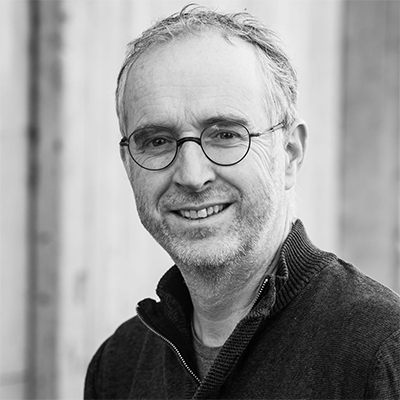

Roeland Merks heads the Mathematical Biology group at Leiden University, an interdisciplinary team at the intersection of experimental biology, mathematics, and physics. His research is focused on the mathematical modelling of the behaviour of single cells and cell collectives, e.g., during the formation of blood vessels, plant development and the gut microbiota. Merks has developed novel mathematical and computational approaches to modelling the biomechanical and chemical interactions between cells and the extracellular matrix that guide the development of multicellular systems, which he has applied to studies of angiogenesis, tumor evolution and a couple of other problems in developmental biology.
Show More
Model predictions are tested using cell culture and zebrafish systems in the group’s experimental lab. Alongside this work on animal cell and developmental biology, Merks maintains active collaborations to model plant development, mostly around his widely used plant tissue modelling package VirtualLeaf. Recent collaborations include a model of cambium development, and a mathematical analysis of a model of auxin fluxes. Merks has received the VIDI (2011) and VICI (2017) career awards of NWO for modelling cell-ECM interactions, and is part of an NWO ENW-XL consortium grant to analyze the biological pacemaker of the heart. He gave the opening keynote of the European Conference for Mathematical and Theoretical Biology 2022 in Heidelberg. From 2008-2014 Merks headed the core modelling group of the Netherlands Consortium for Systems Biology at CWI. He served on the Life Sciences board of the Lorentz Center, was co-founder and member of the steering committee of the Origins Center, was board member of the NDNS+-mathematics cluster, member of the “commissie innovatie” of Platform Wiskunde Nederland, and was president of the ESMTB from 2015-2018.
Key publications:
1. ‘Cell Shape and Durotaxis Explained from Cell-Extracellular Matrix Forces and Focal Adhesion Dynamics’, E.G. Rens and R.M.H. Merks. iScience 23:101488 (2020). https://doi.org/10.1016/j.isci.2020.101488
2. ‘A multiscale spatiotemporal model including a switch from aerobic to anaerobic metabolism reproduces succession in the early infant gut microbiota’, D.M. Versluis, R. Schoemaker, E. Looijesteijn, D. Muysken, P.V. Jeurink, M. Paques, J.M.W. Geurts, R.M.H. Merks. mSystems, ahead of print (2022) https://doi.org/10.1128/msystems.00446-22
3. ‘Evolution of multicellularity by collective integration of spatial information’, E. Sandro Colizzi, R.M.A. Vroomans, R.M.H. Merks. eLife 9:e56349 (2020). http://dx.doi.org/10.7554/eLife.56349
4. ‘Plant Systems Biology: Methods and Protocols’, C.-C. Antonovici, G.Y. Peerdeman, H.B. Wolff, R.M.H. Merks. Modeling Plant Tissue Development Using VirtualLeaf. In: Mikael Lucas (Ed.), series Methods in Molecular Biology book series (MIMB, volume 2395), pp. 165-198 (2022). https://link.springer.com/protocol/10.1007/978-1-0716-1816-5_9
5. ‘Cytoskeletal Anisotropy Controls Geometry and Forces of Adherent Cells’, W.Pomp*, K. Schakenraad*, H.E. Balcioğlu, H. van Hoorn, E.H.J. Danen, R.M.H. Merks, T. Schmidt, L. Giomi (* equal contributions). Physical Review Letters 121:178101 (2018). https://arxiv.org/abs/1702.03916
Show Less
Mariana Silva Artur is currently a postdoctoral researcher in the Laboratory of Plant Physiology at Wageningen University in the group of Leónie Bentsink, who is expected to enter the Tenure Track programme at WUR at the start of GreenTE. Her main research interest is on understanding how plants cells survive desiccation. During her PhD she studied the evolution and molecular physiology of desiccation tolerance in seeds and resurrection plants, and the structure and function of desiccation protective LEA proteins.
Show More
After her PhD, she joined Dr. Kaisa Kajala’s group at Utrecht University to study the development, physiology and transcriptional regulation of tomato root exodermis suberization in response to drought. In 2020, Mariana received an NWO-Veni grant to study the transcriptional and translational regulation of desiccation tolerance during seed development. She was also appointed as a postdoctoral researcher in the Seeds for the Future Initiative that was set up to bridge fundamental and applied seed research at Wageningen University. Her knowledge on the genomics and physiology of desiccation tolerance in seeds will contribute to understanding how mechanical forces (e.g., caused by desiccation) are sensed by seed cells at different developmental stages and how this information is integrated in the cellular environment to induce a protective response. These insights are essential for understanding how developmental regulatory networks are modulated by external factors and how seeds and in vitro cultured plant material can be better stored in the dry state.
Show Less
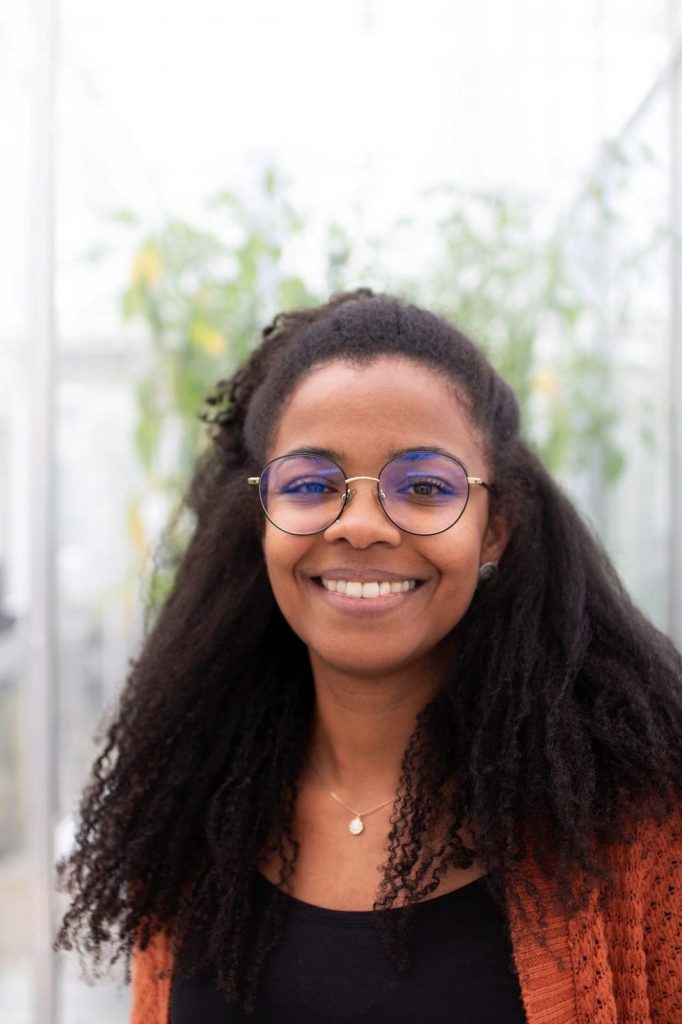
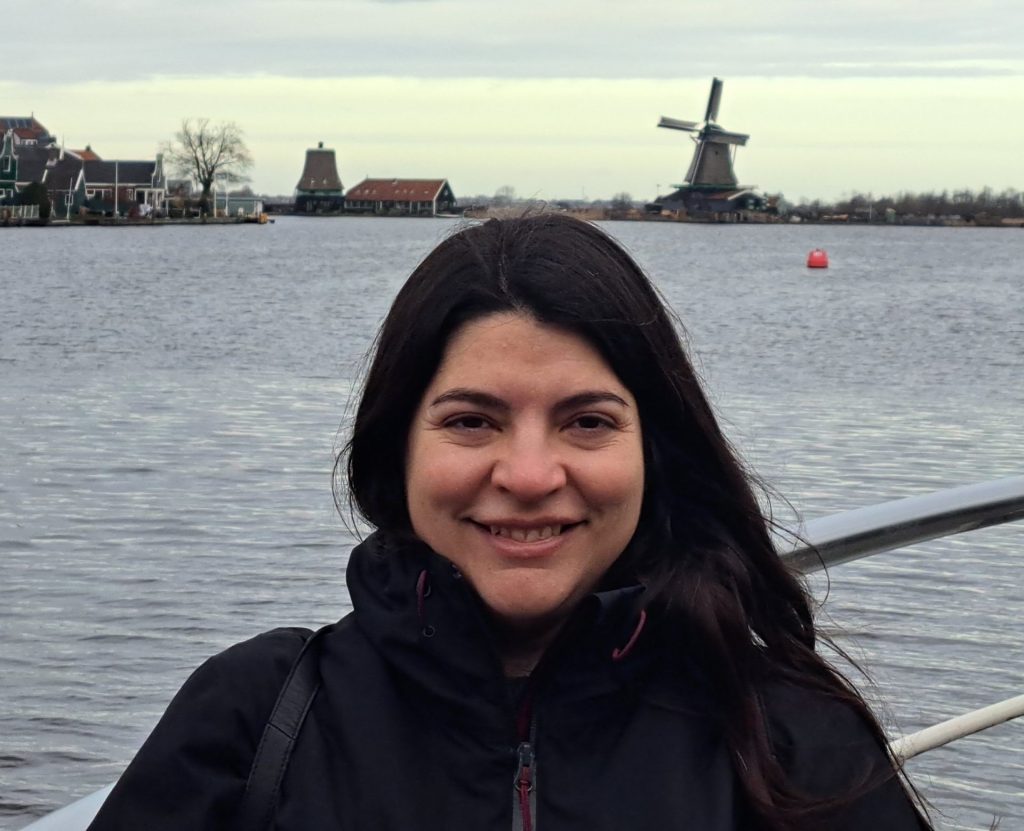
Cecilia Borassi is currently a postdoc in the Laboratory of Biochemistry at WUR, working on mechanosensitive receptor kinases under the supervision of Prof. dr Joris Sprakel and Prof. dr. Dolf Weijers. She obtained her Biology degree at the National University of Luján (Argentina) where she isolated and characterized Phytophtora species infecting crops managed by local farmers. In 2013 Borassi started her PhD at the University of Buenos Aires, funded by the National Scientific and Research Council (CONICET) to study the role of Receptor-Like Kinases during pollen tube growth in the model plant Arabidopsis thaliana.
Show More
In 2017 she was awarded a Fulbright fellowship, as visiting scholar at the University of California, Davis. In 2018 Borassi started a postdoc at Fundación Instituto Leloir (Buenos Aires) at the Laboratory of Molecular Basis of Plant Development, where she studied the role of a small arabinogalactan peptide influencing cell fate in the epidermis of A. thaliana roots. Borassi worked as teaching assistant in Molecular Biology (2012-2013) and Organic Chemistry (2009-2021) at National University of Luján. Since being an undergraduate student Borassi participated and organized several outreach activities (Plant Development and Physiology talks during the Night of the Museums in Buenos Aires, Plant Biology talks at elementary schools, Chemistry lessons for high school students and teachers through the ‘Chemistry in action’ project).
As of September 1st, 2024, Cecilia Borassi will start as project manager of GreenTE.
Show Less
